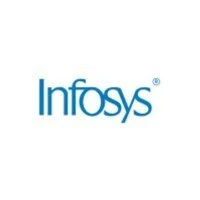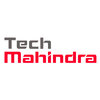


i
Infosys
Work with us
![]()
Filter interviews by
Infosys Technology Analyst Interview Questions and Answers
188 Interview questions
The project involved developing a data analytics platform to enhance decision-making in technology management.
Conducted a thorough analysis of existing data management systems to identify gaps.
Implemented machine learning algorithms to predict technology trends, improving strategic planning.
Collaborated with cross-functional teams to gather requirements and ensure alignment with business goals.
Utilized visualizati...
I've utilized various design patterns like Singleton, Observer, and Factory in my projects to enhance code maintainability and scalability.
Singleton: Ensured a single instance of a configuration manager in a web application.
Observer: Implemented in a notification system where multiple components react to user actions.
Factory: Used to create different types of user objects based on user roles in an authentication m...
Polymorphism allows methods to do different things based on the object type, enhancing flexibility in programming.
Polymorphism is a core concept in Object-Oriented Programming (OOP).
It allows methods to be defined in multiple forms.
There are two types: compile-time (method overloading) and runtime (method overriding).
Example of method overloading: a function 'add' can add integers or doubles.
Example of method over...
OOP concepts include encapsulation, inheritance, polymorphism, and abstraction, forming the foundation of object-oriented programming.
Encapsulation: Bundling data and methods that operate on the data within one unit (class). Example: A class 'Car' with attributes like 'speed' and methods like 'accelerate()'.
Inheritance: Mechanism where a new class derives properties and behavior from an existing class. Example: 'E...
SQL Joins combine rows from two or more tables based on related columns, enabling complex queries and data retrieval.
INNER JOIN: Returns records with matching values in both tables. Example: SELECT * FROM A INNER JOIN B ON A.id = B.id;
LEFT JOIN: Returns all records from the left table and matched records from the right table. Example: SELECT * FROM A LEFT JOIN B ON A.id = B.id;
RIGHT JOIN: Returns all records from ...
Identify and resolve memory leaks through systematic analysis and debugging techniques.
Monitor memory usage over time using tools like VisualVM or JProfiler to identify abnormal growth patterns.
Use profiling tools to analyze heap dumps and identify objects that are not being released, such as in Java applications.
Review code for common memory leak patterns, such as static collections holding references to objects ...
An immutable class is a class whose instances cannot be modified after creation, ensuring data integrity and thread safety.
Immutable classes prevent changes to their state after creation, e.g., String in Java.
They often provide methods to return new instances with modified values, e.g., LocalDate in Java.
Immutable objects are inherently thread-safe, reducing synchronization issues.
Commonly used in functional progr...
Spring Boot simplifies Java application development with rapid setup, microservices support, and built-in features.
Rapid Development: Spring Boot reduces boilerplate code, allowing developers to create applications quickly. For example, using Spring Initializr.
Microservices Architecture: It supports building microservices, enabling scalable and maintainable applications. For instance, Netflix uses Spring Boot.
Embe...
Generative AI is crucial for innovation, creativity, and efficiency across various industries, transforming how we create and interact with technology.
Enhances creativity by generating new content, such as art, music, and writing. For example, tools like DALL-E create images from text prompts.
Improves efficiency in content creation, allowing businesses to produce marketing materials quickly and at scale.
Facilitate...
Interfaces define contracts for classes, while abstract classes provide a base with shared code and can have implemented methods.
An interface can only declare methods, while an abstract class can declare methods and provide some implementation.
A class can implement multiple interfaces but can inherit from only one abstract class.
Interfaces are used for defining capabilities (e.g., Comparable), while abstract class...
Infosys Technology Analyst Interview Experiences
171 interviews found
I applied via Naukri.com and was interviewed in Nov 2024. There were 2 interview rounds.
(2 Questions)
- Q1. OOPS, DI, Diff between Read-only and const
- Q2. Types of classes
- Ans.
Types of classes include abstract classes, concrete classes, interface classes, and inner classes.
Abstract classes cannot be instantiated and may contain abstract methods.
Concrete classes can be instantiated and provide implementations for all methods.
Interface classes define a contract for classes to implement.
Inner classes are classes defined within another class.
(2 Questions)
- Q1. Strength and weakness
- Q2. How do you handle difficult situations within a team?
- Ans.
I address difficult situations within a team by promoting open communication, seeking to understand all perspectives, and collaborating on solutions.
Promote open communication to address issues early on
Seek to understand all perspectives before making decisions
Collaborate with team members to find mutually beneficial solutions
I appeared for an interview in Jun 2025, where I was asked the following questions.
- Q1. Which design patterns have you utilized in your projects?
- Ans.
I've utilized various design patterns like Singleton, Observer, and Factory in my projects to enhance code maintainability and scalability.
Singleton: Ensured a single instance of a configuration manager in a web application.
Observer: Implemented in a notification system where multiple components react to user actions.
Factory: Used to create different types of user objects based on user roles in an authentication module...
- Q2. How have you addressed security concerns in your project?
- Ans.
I implemented various security measures, including encryption, access controls, and regular audits to safeguard project data.
Conducted a thorough risk assessment to identify potential vulnerabilities.
Implemented encryption protocols for data at rest and in transit, such as AES-256.
Established role-based access controls to limit data access to authorized personnel only.
Regularly updated software and systems to patch kno...
I applied via Naukri.com and was interviewed in Sep 2024. There was 1 interview round.
(3 Questions)
- Q1. Java 8 features
- Q2. Microservices framework
- Q3. OOPs concepts & multi threading
Interview Preparation Tips
I applied via Naukri.com and was interviewed in Nov 2024. There was 1 interview round.
(1 Question)
- Q1. Angular basics,pipes ,life cycle hook pipes.
(1 Question)
- Q1. Core Java, OOPS, Design Patters, Spring Boot, IOC, SOLID Principles, SQL queries
I applied via Referral and was interviewed in Mar 2024. There were 2 interview rounds.
(4 Questions)
- Q1. Tell me yourself
- Q2. What is your skillset and based on your skill set some straight forward question in round 1 and scenario based question in round 2.
- Q3. Tell me some analytic function of sql
- Ans.
Analytic functions in SQL are used to perform calculations across a set of rows related to the current row.
Common analytic functions include ROW_NUMBER, RANK, DENSE_RANK, LEAD, and LAG.
They can be used to calculate running totals, moving averages, and identify duplicates in a dataset.
Analytic functions are typically used with the OVER() clause to define the window of rows to be used in the calculation.
- Q4. Difference between rank and dense rank
(2 Questions)
- Q1. I have Oracle EBS APPS.. so I faced questions on PLSQL tuning, exception handling, XML publisher report, P2P cycle with associative table
- Q2. Bulk Binding, Bulk collect, cursor, dynamic SQL,DML/DDL Trigger
Interview Preparation Tips
Skills evaluated in this interview
I applied via Naukri.com and was interviewed in May 2024. There was 1 interview round.
(3 Questions)
- Q1. Difference in POST and PUT
- Ans.
POST is used to create a new resource, while PUT is used to update an existing resource.
POST is used to create a new resource on the server.
PUT is used to update an existing resource on the server.
POST requests are not idempotent, while PUT requests are idempotent.
POST requests do not require the client to specify the URI of the new resource, while PUT requests do.
Example: POST /users creates a new user, PUT /users/123...
- Q2. Explain headers with example in HTTP
- Q3. What is @Qualifier annotation
- Ans.
The @Qualifier annotation is used in Spring framework to specify which bean should be autowired when multiple beans of the same type are present.
Used to resolve ambiguity when multiple beans of the same type are present
Can be used with @Autowired annotation to specify the bean to be injected
Helps in selecting the bean based on a specific qualifier value
Skills evaluated in this interview
I applied via Recruitment Consulltant and was interviewed in Apr 2024. There were 2 interview rounds.
(3 Questions)
- Q1. 1. Introduces your self 2. Ask about basic datastage questions
- Q2. 3 . Explain scd 2 and how can we build in datastage 4. Write sql query which is related to join and sub query.
- Ans.
SCD 2 is a type of slowly changing dimension in data warehousing, and can be implemented in DataStage using various techniques.
SCD 2 stands for Slowly Changing Dimension Type 2, which tracks historical changes in data over time.
In DataStage, SCD 2 can be implemented using the Change Data Capture stage or custom SQL queries.
To implement SCD 2 in DataStage, you need to identify the key columns for tracking changes, defin...
- Q3. 5. How to improve performance in Datastage
- Ans.
To improve performance in Datastage, optimize job design, use efficient coding practices, utilize parallel processing, and monitor job performance.
Optimize job design by reducing unnecessary stages and transformations
Use efficient coding practices such as avoiding unnecessary data reads and writes
Utilize parallel processing to take advantage of multiple CPU cores
Monitor job performance using Datastage Director or other...
(2 Questions)
- Q1. 1. Introduce yourself self
- Q2. 2. Why are you planing to switch job
I applied via Campus Placement and was interviewed in Oct 2024. There were 2 interview rounds.
Quants, reasoning, english
With oops concepts, data structures
I applied via Naukri.com and was interviewed in Aug 2024. There was 1 interview round.
(2 Questions)
- Q1. Change management
- Q2. Dns dhcp troubleshooting
What people are saying about Infosys






Infosys Interview FAQs
Some of the top questions asked at the Infosys Technology Analyst interview for job -
The duration of Infosys Technology Analyst interview process can vary, but typically it takes about less than 2 weeks to complete.
Tell us how to improve this page.
Infosys Interviews By Designations
- Infosys System Engineer Interview Questions
- Infosys Software Engineer Interview Questions
- Infosys Associate Consultant Interview Questions
- Infosys Technology Analyst Interview Questions
- Infosys Senior Systems Engineer Interview Questions
- Infosys Software Developer Interview Questions
- Infosys Business Analyst Interview Questions
- Infosys Senior Associate Consultant Interview Questions
- Show more
Interview Questions for Popular Designations
Overall Interview Experience Rating
based on 102 interview experiences
Difficulty level
Duration
Top Skills for Infosys Technology Analyst






Interview Questions from Similar Companies
Infosys Technology Analyst Reviews and Ratings
based on 4.7k reviews
Rating in categories
|
Technology Analyst
55k
salaries
| ₹4.8 L/yr - ₹10 L/yr |
|
Senior Systems Engineer
54.6k
salaries
| ₹2.5 L/yr - ₹6.3 L/yr |
|
Technical Lead
35.5k
salaries
| ₹9.5 L/yr - ₹16.5 L/yr |
|
System Engineer
32.7k
salaries
| ₹2.4 L/yr - ₹5.5 L/yr |
|
Senior Associate Consultant
32.6k
salaries
| ₹8.3 L/yr - ₹15 L/yr |

TCS

Wipro

Cognizant

Accenture
- Home >
- Interviews >
- Infosys Interview Questions >
- Infosys Job Interview Questions













